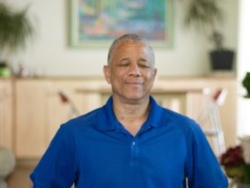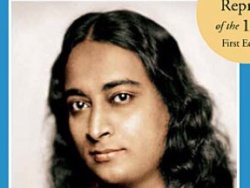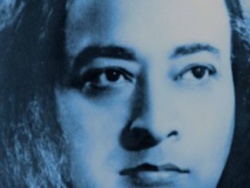Death is only an experience through which you are meant to learn a great lesson: you cannot die. – Paramhansa Yogananda
We mortals have so many misconceptions about death that it has grown in importance and implanted in us the idea of annihilation and pain. Death is simply one of the steps in the soul’s journey from the state of changeable matter to the changeless state of Spirit.
Never discourage a dying person
Once two students of mine, a brother and sister, had a very interesting experience. The sister lay dying in a room with her brother and doctors in attendance. When the brother left the room for a moment, his sister had a spasm and appeared to have died. The doctors exclaimed, “All is over; her pulse has failed.”
As soon as the brother came back, he ordered everybody out of the room, and then shook his sister vigorously, crying, “Sister, remember what Yoganandaji told you: If you make the effort you will live.”
His sister made a supreme effort and her breath returned. She sat up and told of her experience: “I was trying through my will power to stir the life force in my inert body, but as soon as I heard the doctors say, ‘All is over,’ I lost the will to live and experienced a complete inertia in my muscles and internal organs.”
So remember, never say anything to discourage a sick or dying person from making the effort of will to live, even if death appears certain. It is the exercise of will power that connects the life-sustaining energy to the body.
To keep your will power strong, try never to lose interest in life. Death comes when your will gives up. You become so tortured by illness or pain that you say, “All right, let me go.” And you give up.
The process of dying
When the average person dies, the entire body usually becomes paralyzed, just as when a part of your body sometimes “goes to sleep.” In the beginning the dying person is conscious of this process.
When the heart begins to grow numb, there is a sense of suffocation because without heart action, the lungs cannot operate. This sense of suffocation is a little painful for only one to three seconds, but because souls reincarnate many times, they retain the memory of this painful feeling of suffocation. This memory causes fear of death.
During this feeling of suffocation, attachments to possessions and loved ones sometimes come strongly to mind and there is a struggle to bring the breath back. At this time, a condensed review of all the good and bad actions of this lifetime takes place in the mind of the dying person. The senses of touch, taste, smell, sight, and hearing then vanish in succession, with the sense of hearing being the last to leave.
The soul next finds itself suddenly relieved of the body’s weight, the necessity of breathing, and any physical pain. When the soul realizes that its body is gone, it becomes reconciled to dying and experiences a sense of soaring through a very peaceful tunnel.
When a person dies suddenly, as by a gunshot or sudden accident, he experiences practically no physical pain. If he has lived a good life, he seldom suffers any mental agony.
The period between death and rebirth
In the astral world, people of worldly consciousness enter a sort of gray mist. Some of them are vaguely conscious, depending on the sensitivity of their perception, but for many it is like a dream. They aren’t quite sure what is going on.
If your intuition is even slightly developed, however—especially if you’ve meditated and prayed some in this life, but also if you’ve served others, even as a soldier who fought heroically in battle—you will find that the astral world is far more beautiful than this one, and extremely enjoyable!
What binds us to this world?
Many superficial devotees are haunted by the fear of death. Rather than lament the inevitability of death, they should try in every way to become free of all earthly attachments by tuning in to Spirit in meditation.
There is the story of a man who, as he lay dying, saw that the oil lamp in his room was burning too high. He called out to his son, “Hey, Ramu, turn down that light: It is wasting oil!” There the man was, on the point of leaving his body—the “oil” in his own “lamp” was nearly exhausted. And still he worried about wasting the oil in that lamp! Such is worldly attachment. Even at death, people cling to what they call life.
Most people lose all interest in this world at the time of death. That is natural and right: After all, they are soon going to have to leave it! Besides, this world is God’s, not ours. That mental disinvolvement at the approach of death should remind everyone of the need to be inwardly non-attached throughout life, even while busily engaged in worldly activities. Eternal bliss awaits you if you remain non-attached to this world, and “attached” only to God.
Always be vigilant and monitor your reactions
Devotees haunted by the fear of death must learn to separate the immortal soul from the consciousness of the mortal body. You are sent on earth to witness earthly experiences—heat and cold, disease, war, famine, pain and suffering—as unaffectedly as you would watch a motion picture. When you are able to watch your own life’s experiences as unaffectedly as you watch motion pictures, you will leave this earth in death as a free master.
Earthly experiences do not create attachment until the heart is touched. The heart, through its likes and dislikes, binds an individual to the wheel of birth, death, and earthly suffering. So always be vigilant and monitor your reactions. Gradually learn to control your reactions to both agreeable and disagreeable experiences.
Remember, however, that renunciation of material objects, of itself, does not insure freedom from attachment. It is by communing with the greater bliss of Spirit in meditation that a person learns, through deep inner conviction, to rise above the likes and dislikes of the heart and to relinquish the lesser joy of earthly experiences.
The devotee who meditates deeply and experiences the pure joy of Spirit attains an unwavering mental calmness and is able to rise above the duality of pain and pleasure.
Learn to die “consciously”
Although the ordinary person at the time of death is not conscious of his soul moving through the spiritual eye, devotees who are unattached to the body, and who have achieved control over the life force, experience no loss of consciousness at death. They move consciously through the spiritual eye and experience what is known as “conscious death.”
In the superconscious state of meditation, the eyes become fixed at the spiritual eye at the point between the eyebrows. As human beings, we are like the unhatched chick in the shell. By meditation and concentrating on the spiritual eye, we can bore a hole in the roof of the shell and the soul can slip out into the infinite.
In other words, by deep concentration at the light of the spiritual eye, we gradually learn to send our energy and consciousness through the spiritual eye into the infinite. Many devotees have beheld this tunnel of light (the spiritual eye) ushering them into the infinite at the time of death.
An unshakeable inner conviction
The ordinary man fears death, but the wise man sees birth and death as changes playing on the bosom of Spirit—just as waves repeatedly rise and fall on the bosom of the sea. A soul awake in omnipresent Spirit loses his delusive nightmares of births and deaths.
A poet or religious fanatic may imagine this cosmos to be only a dream in the mind of God, but that will not help him overcome death and attain immortality. The yogi, however, through ecstatic communion with God in meditation, achieves an unshakeable inner conviction of the unreality of the physical cosmos. By beholding the universe as a dream of God, he becomes one with the omnipresent Spirit and attains immortality.
_______________________________________________________
A Clarity Magazine article, from articles and lessons (1930-1938), and Conversations with Yogananda, by Swami Kriyananda (stories wisdom, and sayings of Yogananda recounted with commentary by his disciple)










